At the intersection of Nai Duy Niou and A Lap Kou in Xinjiang, China, there is a small town named “Niu Er Kou.” This area, one of the lowest points on the Tianshan Mountain range, was a crucial northern and southern point on the ancient Silk Road.
Ancient nomads predominantly operated here, leaving behind numerous historical ruins and tombs in this sun-baked, sandy land.
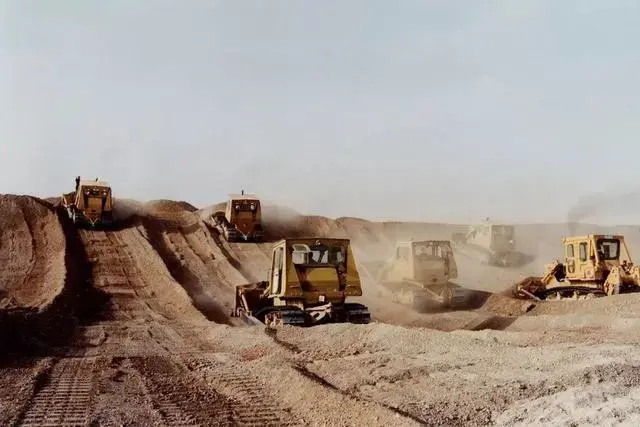
During the construction of the railway station in Ngu Nhi Cau, workers discovered 2,000-year-old ancient tombs.
Notably, 45 years ago, while constructing the Yuergou railway station, workers discovered a series of ancient tombs of various sizes. Among these tombs was one that stood out due to its extraordinary contents. It contained countless national treasure-level gold artifacts, including a gold lion weighing up to one ton, which amazed the entire country and even the world.
The “Golden Tomb” in Xinjiang
In 1976, during the construction of the Yuergou station, railway workers unearthed many ancient tombs. Initially, they discovered over 20 large and small tombs, including numerous bronze and ceramic artifacts, but none were of significant archaeological value.
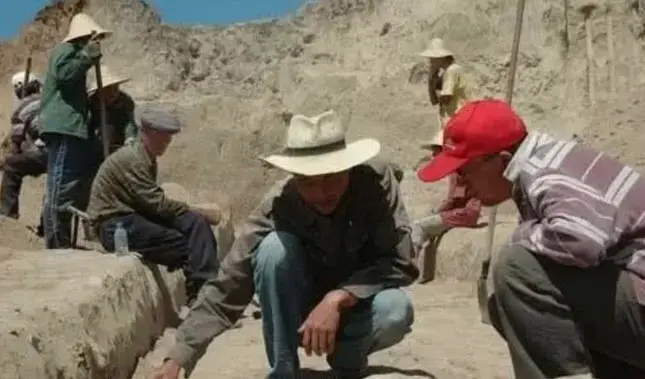
Archaeologists have discovered a tomb filled with gold and priceless treasures.
The Xinjiang Institute of Cultural Relics and Archaeology stated that these tombs date from the Spring and Autumn Period through the Qin and Han dynasties, and their occupants were nomadic ethnic minorities.
Later, more tombs were uncovered in the area, totaling over 80. Among them was an exceptionally large tomb filled with an unprecedented amount of gold, silver, and treasures. Thus, this tomb is referred to as the “Golden Tomb.”
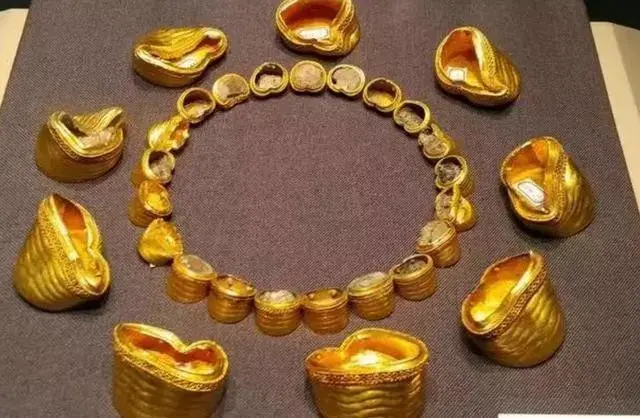
Golden treasures discovered in the tomb
The “Golden Tomb” is 7.1 meters deep, approximately 6.56 meters long, and 4.22 meters wide. It is a vertical tomb lined with cobblestones, simple and crude in design, reflecting the ancient nomadic lifestyle. Inside, eight gold plaques engraved with tiger images, four gold tiger-shaped belt buckles, a lion-shaped gold plaque, and over 200 other gold decorations like gold beads and flowers were discovered.
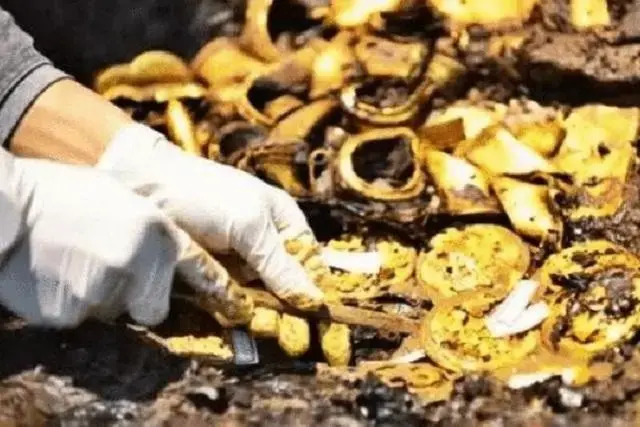
Lots of gold in this 2,000 year old tomb.
What surprised experts the most was a lion-shaped gold plaque weighing nearly a ton. Additionally, the archaeological team found the earliest lacquerware product in the Central Plain (now China) within the tomb.
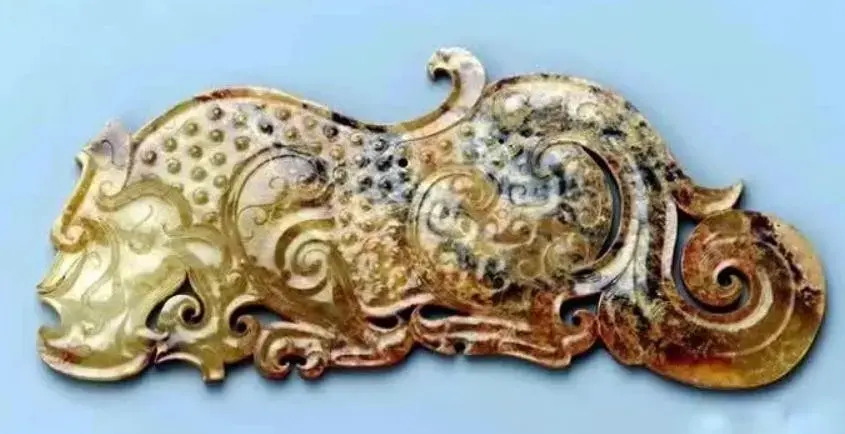
The golden lion card weighs 1 ton, carved lifelike.
Carbon-14 dating indicates that the tomb’s occupant was buried about 2,345 to 2,135 years ago. Therefore, the discovery of this lacquerware is of great significance. So, who was the mysterious occupant of this tomb? Why were there so many gold artifacts buried with her?
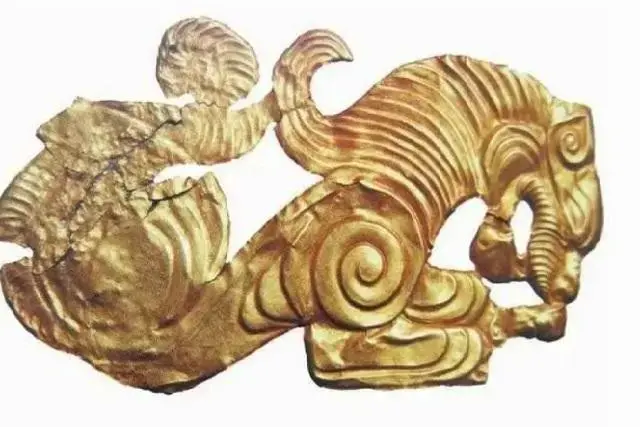
Some artifacts, gold cards inside the tomb.
The Mystery of the Female Owner of the Ancient Tomb
After opening the sarcophagus, archaeologists found a human skeleton. Tests revealed that the tomb’s occupant lived about 2,135 years ago and was a woman who was around 30 years old at the time of her death. The most surprising finding was a hole in the skull, similar to a bullet wound.
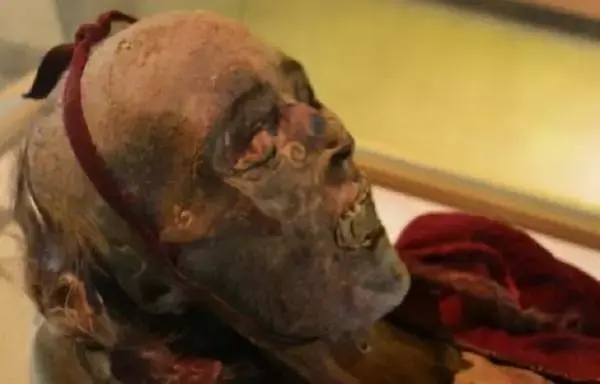
To this day, the identity of the owner of the gold-filled tomb remains a mystery.
After a long period of study, experts determined that this hole was a result of a “trepanation” surgery, which was a common practice among ancient Chinese nomads.
When someone suffered from head ailments, a hole would be drilled in the head to alleviate pain. However, this surgery had a high risk of causing death if not performed carefully.
Experts believe the female occupant was likely a daughter or the wife of a chieftain of the Saka tribe more than 2,000 years ago.
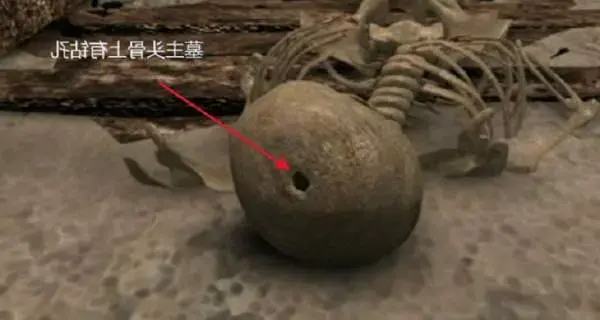
Skull with hole discovered in tomb
Over 3,000 years ago, the Saka tribe thrived in the Pamir Mountains, Tianshan, and most of northern Xinjiang. They relied on water and vegetation and officially entered a class-based society by the late 3rd century BC, eventually establishing a state.
In the “Book of Han,” the Saka people are mentioned as playing a significant role in the Xinjiang area. This tribe greatly revered gold, so most of the burial items in their tombs were gold. The female occupant of this tomb likely held an important position in the tribe. Given her early death at just over 30 years old, experts speculate she might have been the daughter or wife of the Saka chieftain.
However, there is still no definitive evidence or conclusion about the identity of the mysterious woman in the “Golden Tomb.”




